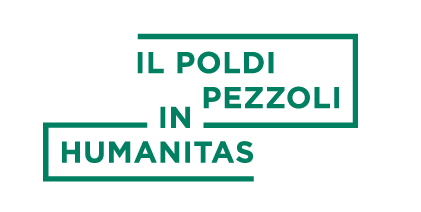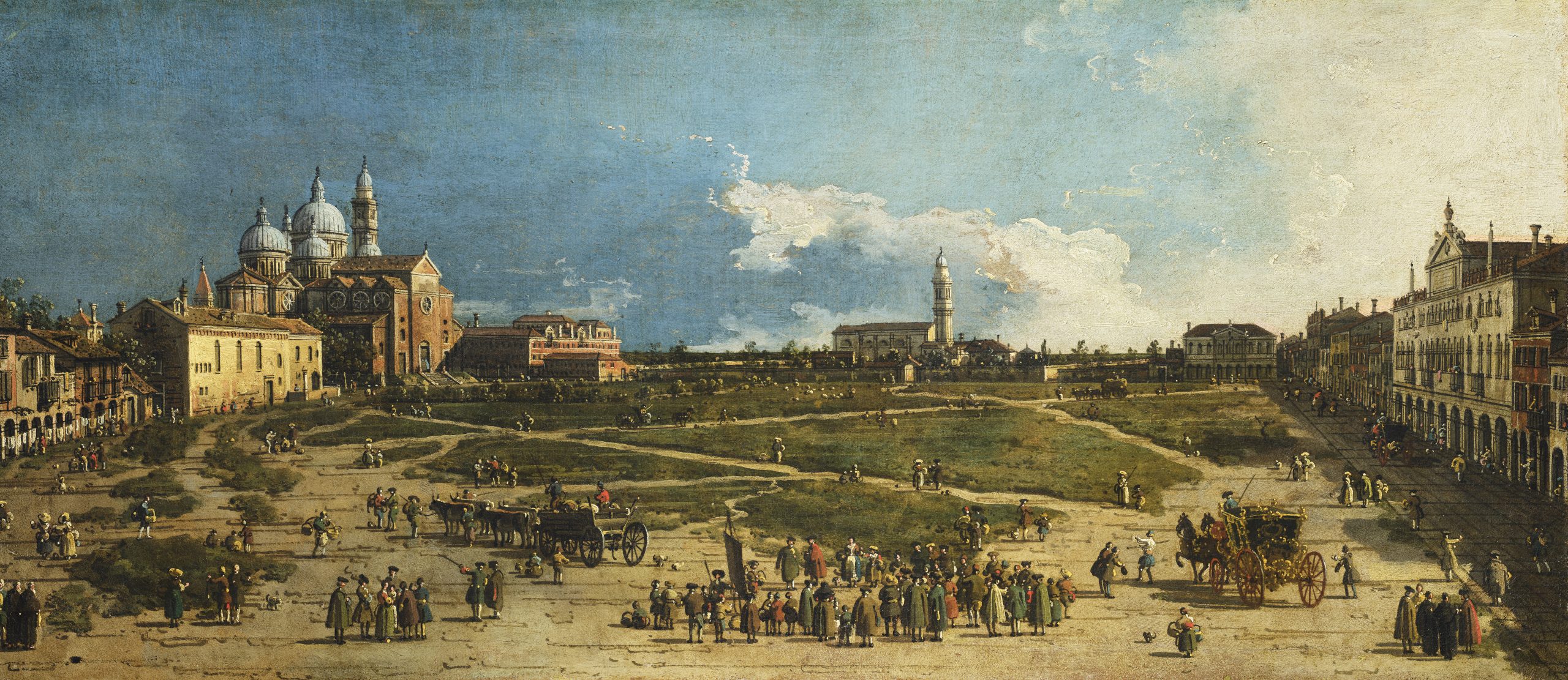
Giovanni Antonio Canal, known as Canaletto
(Venice 1697–1768)
The Prato della Valle in Padua
1741-1746
Oil on canvas
39×87 cm
Museo Poldi Pezzoli, Milan

ARTWORK
Painted between 1741 and 1746, this work depicts the Prato della Valle in Padua before the interventions of 1775-1776 altered its appearance. The painting is therefore a valuable record of the history of the city.
While several figures populate the vast space, they do not create a sense of movement. Indeed, what brings the square to life is the brightness that pervades it, and the contrast between the dense shadows and the bright light; it is the sky, brightening towards the right, which accentuates the horizontal dimension of the canvas. Buildings on either side of the painting flank the grass-covered square, which is overlooked by the Basilica of Santa Giustina on the left, and the Collegio Universitario on the right.
The painting is an example of Venetian vedutismo (view painting), a genre of which Canaletto was a master. The artist was interested in the accurate representation of reality. To do this, he used a camera obscura which he designed himself. Consisting of a box, the camera obscura was placed in front of the view to be painted. An image of the view was then projected onto a sheet of paper through a system of reflective mirrors and convex lenses. This allowed him to carry out preparatory studies on site, which he then used to make engravings or paintings back in his workshop.
BIOGRAPHY
Giovanni Antonio Canal, known as Canaletto, was born in Venice in 1697. His father was a painter of theatre sets, and the two of them worked together on a number of projects in Rome’s theatres.
Returning to Venice in 1720, he began painting views or vedute. They were extremely precise and detailed, and brought him significant recognition. We know that the artist made preparatory drawings using a tool known as the camera obscura. He later found painting pictures as souvenirs for tourists to be very profitable. In these works, his painting was less precise, featuring theatrical illumination and an almost Impressionist interest in the play of light and shadow. These paintings usually depict sumptuous Venetian public ceremonies (e.g. A Regatta on the Grand Canal) along with partial views of the city. In addition to his vedute, he also produced several capricci: imagined landscapes often featuring classical ruins.
Canaletto was highly regarded by foreign collectors and visited England several times between 1746 and 1756. He died in Venice on 19 April 1768.
